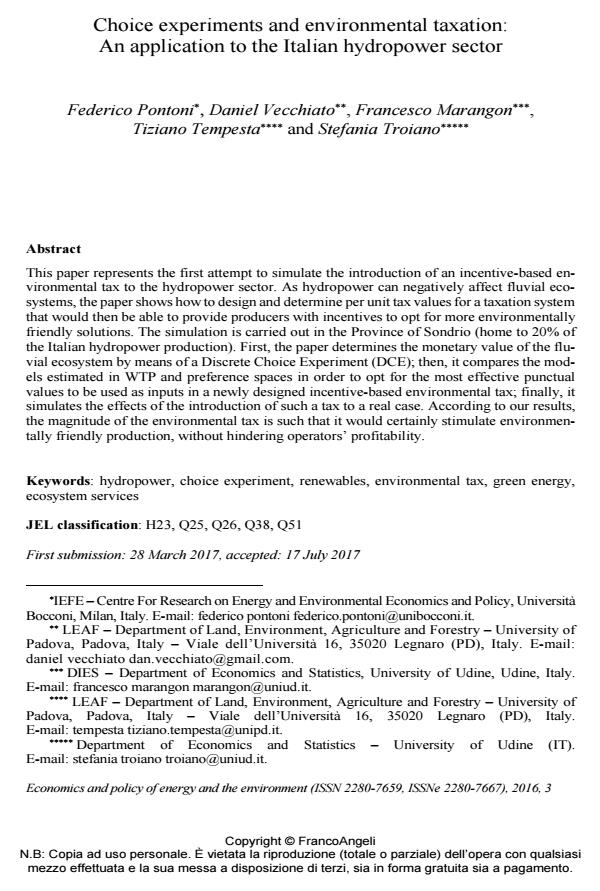Choice experiments and environmental taxation: An application to the Italian hydropower sector
Titolo Rivista ECONOMICS AND POLICY OF ENERGY AND THE ENVIRONMENT
Autori/Curatori Federico Pontoni, Daniel Vecchiato, Francesco Marangon, Tiziano Tempesta, Stefania Troiano
Anno di pubblicazione 2017 Fascicolo 2016/3
Lingua Inglese Numero pagine 20 P. 99-118 Dimensione file 290 KB
DOI 10.3280/EFE2016-003009
Il DOI è il codice a barre della proprietà intellettuale: per saperne di più
clicca qui
Qui sotto puoi vedere in anteprima la prima pagina di questo articolo.
Se questo articolo ti interessa, lo puoi acquistare (e scaricare in formato pdf) seguendo le facili indicazioni per acquistare il download credit. Acquista Download Credits per scaricare questo Articolo in formato PDF

FrancoAngeli è membro della Publishers International Linking Association, Inc (PILA)associazione indipendente e non profit per facilitare (attraverso i servizi tecnologici implementati da CrossRef.org) l’accesso degli studiosi ai contenuti digitali nelle pubblicazioni professionali e scientifiche
This paper represents the first attempt to simulate the introduction of an incentive-based environmental tax to the hydropower sector. As hydropower can negatively affect fluvial ecosystems, the paper shows how to design and determine per unit tax values for a taxation system that would then be able to provide producers with incentives to opt for more environmentally friendly solutions. The simulation is carried out in the Province of Sondrio (home to 20% of the Italian hydropower production). First, the paper determines the monetary value of the fluvial ecosystem by means of a Discrete Choice Experiment (DCE); then, it compares the models estimated in WTP and preference spaces in order to opt for the most effective punctual values to be used as inputs in a newly designed incentive-based environmental tax; finally, it simulates the effects of the introduction of such a tax to a real case. According to our results, the magnitude of the environmental tax is such that it would certainly stimulate environmentally friendly production, without hindering operators’ profitability.
Parole chiave:Hydropower, choice experiment, renewables, environmental tax, green energy, ecosystem services
Jel codes:H23, Q25, Q26, Q38, Q51
- Water Law, Policy and Economics in Italy Giulia Vaglietti, Federico Pontoni, Alessandro de Carli, Antonio Massarutto, pp.57 (ISBN:978-3-030-69074-8)
Federico Pontoni, Daniel Vecchiato, Francesco Marangon, Tiziano Tempesta, Stefania Troiano, Choice experiments and environmental taxation: An application to the Italian hydropower sector in "ECONOMICS AND POLICY OF ENERGY AND THE ENVIRONMENT" 3/2016, pp 99-118, DOI: 10.3280/EFE2016-003009